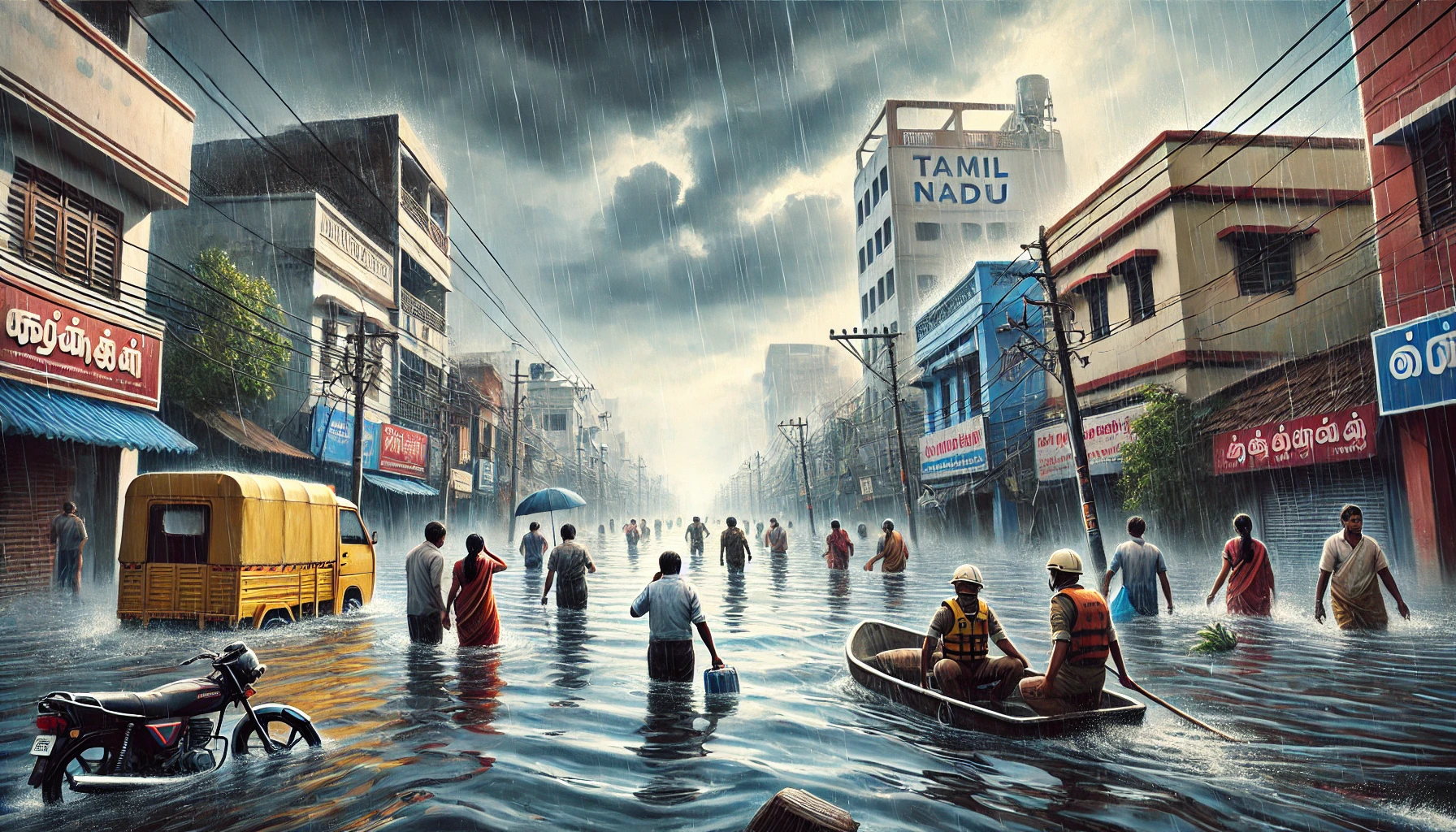
Tamil Nadu is currently grappling with severe flooding, triggered by an intense northeast monsoon and a depression over the Bay of Bengal. The heavy rains, which started in mid-October, have significantly impacted several districts, including Chennai, Kanyakumari, Thoothukudi, and Tirunelveli, leading to widespread waterlogging, road blockages, and disruptions to transportation.
The Indian Meteorological Department (IMD) issued a red alert for multiple regions, warning of extremely heavy rainfall. On October 16, torrential rains lashed Chennai, Tiruvallur, Kancheepuram, and Chengalpattu, resulting in streets turning into rivers, with muddy water flooding residential and commercial areas alike. Several districts in southern Tamil Nadu experienced flash floods, severely affecting daily life. Some parts of the state are forecasted to continue experiencing rainfall until at least October 22, causing concerns about additional flooding.
The northeast monsoon arrived earlier than expected, and the precipitation has already surpassed previous records for this time of the year. The Greater Chennai Corporation has been working on flood preparedness since early October, focusing on cleaning stormwater drains and setting up relief centers to aid residents in flood-prone areas. In response to the heavy rainfall, around 36 new rescue boats were procured, with several deployed in high-risk zones to assist with evacuations. Several relief camps have also been established, particularly in Kanyakumari and Tirunelveli, where the flooding is most severe.
The heavy rains have disrupted transportation services across the state. In Chennai, waterlogging has caused the cancellation of multiple train services, including the Chennai Central-Mysuru Kaveri Express, while several domestic flights were also canceled due to poor visibility and reduced passenger turnout. Additionally, bus routes have been affected in many parts of the city, with some roads rendered impassable.
The storm’s intensity is linked to an upper air cyclonic circulation over the Bay of Bengal, which has brought squally weather conditions not just to Tamil Nadu but also neighboring states like Andhra Pradesh and Kerala. The IMD has advised fishermen to avoid venturing into the sea due to gusting winds along the coast.
Authorities have intensified flood prevention measures, including installing temporary embankments and pumping out water from submerged neighborhoods. The Tamil Nadu government, led by Chief Minister M.K. Stalin, is actively monitoring the situation, conducting review meetings with district officials to ensure timely responses and relief operations. The government’s initiatives also include deploying disaster response teams and coordinating with civic agencies to clear clogged drains and repair damaged infrastructure.
While the northern parts of Tamil Nadu have been hit hardest by heavy downpours, the southern districts are experiencing varying levels of rainfall, with some areas receiving below-average precipitation. The Regional Meteorological Centre has forecast that rain will continue intermittently, which may lead to a prolonged flood situation, testing the resilience of local infrastructure and emergency services.
Residents have shared harrowing stories of wading through knee-deep water to reach essential services, and power outages have added to the distress. In Chennai, social media is flooded with images and videos of waterlogged streets, highlighting the challenges faced by citizens. Many schools and colleges have been closed, and employees in the IT sector have been advised to work from home.
Floods during the northeast monsoon are a recurring challenge in Tamil Nadu, and the unpredictable nature of rainfall patterns, exacerbated by climate change, has increased the frequency and severity of these events. In 2023, the state faced a similar crisis, with substantial damage reported in the coastal and interior regions. This year’s early monsoon and above-average rainfall pose new difficulties for the authorities as they work to mitigate the impact and prepare for future emergencies.
Despite ongoing efforts, the flood situation remains critical in many parts of the state. The priority now is to ensure the safety of residents and restore normalcy. Civic bodies and state authorities continue to focus on urgent relief measures, including distributing food and medical supplies to affected communities.




